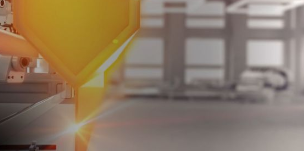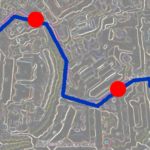We discuss the following topics in this blog:
- Handling changing customer behavior.
- Sterlite Tech’s DCCM platform.
- Required scalability to enable the Tier-1 operator to adopt digital technologies.
In addition to these topics, we shall also be answering the following FAQs:
- What is WiFi?
- What is an Optical Fibre Cable?
Contents
How to Handle Changing End-User Behavior?
We live in a data-driven world where every aspect of our lives is digital — social interactions, payments and shopping. The way we used mobile phone has drastically changed. There has been a rapid increase in global data consumption driven by this changing consumer behaviour.
Changing end-user behaviour brings both challenges and opportunities for Communication Service Providers (CSPs). Decreasing average revenue per user, customer drop-outs during onboarding process, competition from OTT players are some of the key challenges for CSPs with the majority of them already started or planning to start their digital transformation journey.
In a significant digital transformation initiative, Sterlite Tech’s Digital Commerce and Customer Management (DCCM) platform wins an end-to-end digital subscriber onboarding and online sales management deal with a Tier-1 operator in India. With over 200 million subscribers spanning across India, the Tier-1 operator offers voice and data services for retail customers, and mobility and fixed line services for enterprise customers.
Enriching Customer Experience
Sterlite Tech’s DCCM platform is a customer-centric platform that digitises each interaction and every engagement of CSPs, its customers and partners. DCCM enables CSPs to monetise their services via every touchpoint, channels, and devices. It improves operational efficiencies of CSPs by replacing back-office operations with end-to-end automated processes and enriches the end-user experience by providing a one-stop telco storefront for all their needs.
The DCCM platform has the required scalability to enable the Tier-1 operator to adopt digital technologies for ensuring faster time to market and cost-effectiveness. DevOps seamlessly integrates development and operations for faster and continuous outcomes. Open Restful APIs enable the Tier-1 operator to shift from traditional to digital technology without impacting the legacy setup and protecting their existing investment.
As an extension of this deal, Sterlite Tech has also provided managed services for three years, which requires a team of experts to be stationed at the operator’s location to handle dynamic business requirements.
Enabling Digital Onboarding
Sterlite Tech’s System Integration (SI) experience with leading CSPs across the globe and the unique customisation and flexibility features of DCCM are the key differentiators that the Tier-1 operator considered before opting for Sterlite Tech’s DCCM platform for transforming their digital customer experience.
What are the Key Benefits of DCCM?
- 184% increase in the order of activation in 3 months
- 80% man days saving through Automated Testing
- 85% reduction in downtime with Docker approach
- 40% reduction in Subscriber Acquisition Time
- 33% reduction in Time to Market of new feature roll-outs
- 30% reduction in Subscriber Acquisition Cost
FAQs
What is WiFi?
Put simply, WiFi is a technology that uses radio waves to create a wireless network through which devices like mobile phones, computers, printers, etc., connect to the internet. A wireless router is needed to establish a WiFi hotspot that people in its vicinity may use to access internet services. You’re sure to have encountered such a WiFi hotspot in houses, offices, restaurants, etc.
To get a little more technical, WiFi works by enabling a Wireless Local Area Network or WLAN that allows devices connected to it to exchange signals with the internet via a router. The frequencies of these signals are either 2.4 GHz or 5 GHz bandwidths. These frequencies are much higher than those transmitted to or by radios, mobile phones, and televisions since WiFi signals need to carry significantly higher amounts of data. The networking standards are variants of 802.11, of which there are several (802.11a, 802.11b, 801.11g, etc.).
What is an Optical Fibre Cable?
An optical fibre cable is a cable type that has a few to hundreds of optical fibres bundled together within a protective plastic coating. They help carry digital data in the form of light pulses across large distances at faster speeds. For this, they need to be installed or deployed either underground or aerially. Standalone fibres cannot be buried or hanged so fibres are bunched together as cables for the transmission of data.
This is done to protect the fibre from stress, moisture, temperature changes and other externalities. There are three main components of a optical fibre cable, core (It carries the light and is made of pure silicon dioxide (SiO2) with dopants such as germania, phosphorous pentoxide, or alumina to raise the refractive index; Typical glass cores range from as small as 3.7um up to 200um), Cladding (Cladding surrounds the core and has a lower refractive index than the core, it is also made from the same material as the core; 1% refractive index difference is maintained between the core and cladding; Two commonly used diameters are 125µm and 140µm) and Coating (Protective layer that absorbs shocks, physical damage and moisture; The outside diameter of the coating is typically either 250µm or 500µm; Commonly used material for coatings are acrylate,Silicone, carbon, and polyimide).
An optical fibre cable is made up of the following components: Optical fibres – ranging from one to many. Buffer tubes (with different settings), for protection and cushioning of the fibre. Water protection in the tubes – wet or dry. A central strength member (CSM) is the backbone of all cables. Armoured tapes for stranding to bunch the buffer tubes and strength members together. Sheathing or final covering to provide further protection.
The five main reasons that make this technology innovation disruptive are fast communication speed, infinite bandwidth & capacity, low interference, high tensile strength and secure communication. The major usescases of optical fibre cables include intenet connectivity, computer networking, surgery & dentistry, automotive industry, telephony, lighting & decorations, mechanical inspections, cable television, military applications and space.













